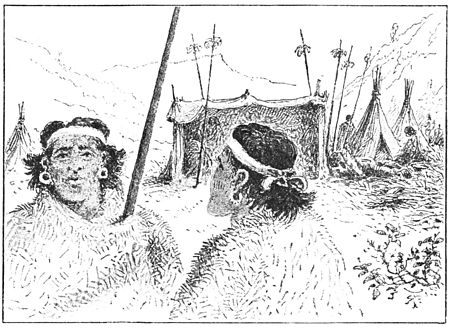trees. When young it is elastic and turgid, with a smooth surface; but when mature it shrinks, becomes tougher, and has its entire surface deeply pitted or honeycombed, as represented in the accompanying woodcut. This fungus belongs to a new and  Fig. 2.—Cyttaria Darwinii. curious genus. I found a second species on another species of beech in Chili; and Dr. Hooker informs me that just lately a third species has been discovered on a third species of beech in Van Diemen's Land. How singular is this relationship between parasitical fungi and the trees on which they grow, in distant parts of the world! In Tierra del Fuego the fungus in its tough and mature state is collected in large quantities by the women and children, and is eaten uncooked. It has a mucilaginous, slightly sweet taste, with a faint smell like that of a mushroom. With the exception of a few berries, chiefly of a dwarf arbutus, the natives eat no vegetable food besides this fungus. In New Zealand, before the introduction of the potato, the roots of the fern were largely consumed; at the present time, I believe, Tierra del Fuego is the only country in the world where a cryptogamic plant affords a staple article of food.
Fig. 2.—Cyttaria Darwinii. curious genus. I found a second species on another species of beech in Chili; and Dr. Hooker informs me that just lately a third species has been discovered on a third species of beech in Van Diemen's Land. How singular is this relationship between parasitical fungi and the trees on which they grow, in distant parts of the world! In Tierra del Fuego the fungus in its tough and mature state is collected in large quantities by the women and children, and is eaten uncooked. It has a mucilaginous, slightly sweet taste, with a faint smell like that of a mushroom. With the exception of a few berries, chiefly of a dwarf arbutus, the natives eat no vegetable food besides this fungus. In New Zealand, before the introduction of the potato, the roots of the fern were largely consumed; at the present time, I believe, Tierra del Fuego is the only country in the world where a cryptogamic plant affords a staple article of food.

Fig. 3.—Patagonians from Cape Gregory.
In the end of May, 1834, we entered for the second time the eastern mouth of the Strait of Magellan. The country on both sides of this part of the strait consists of nearly level plains, like those of Patagonia. Cape Negro, a little within the second Narrows, may be considered as the point where the land begins to
